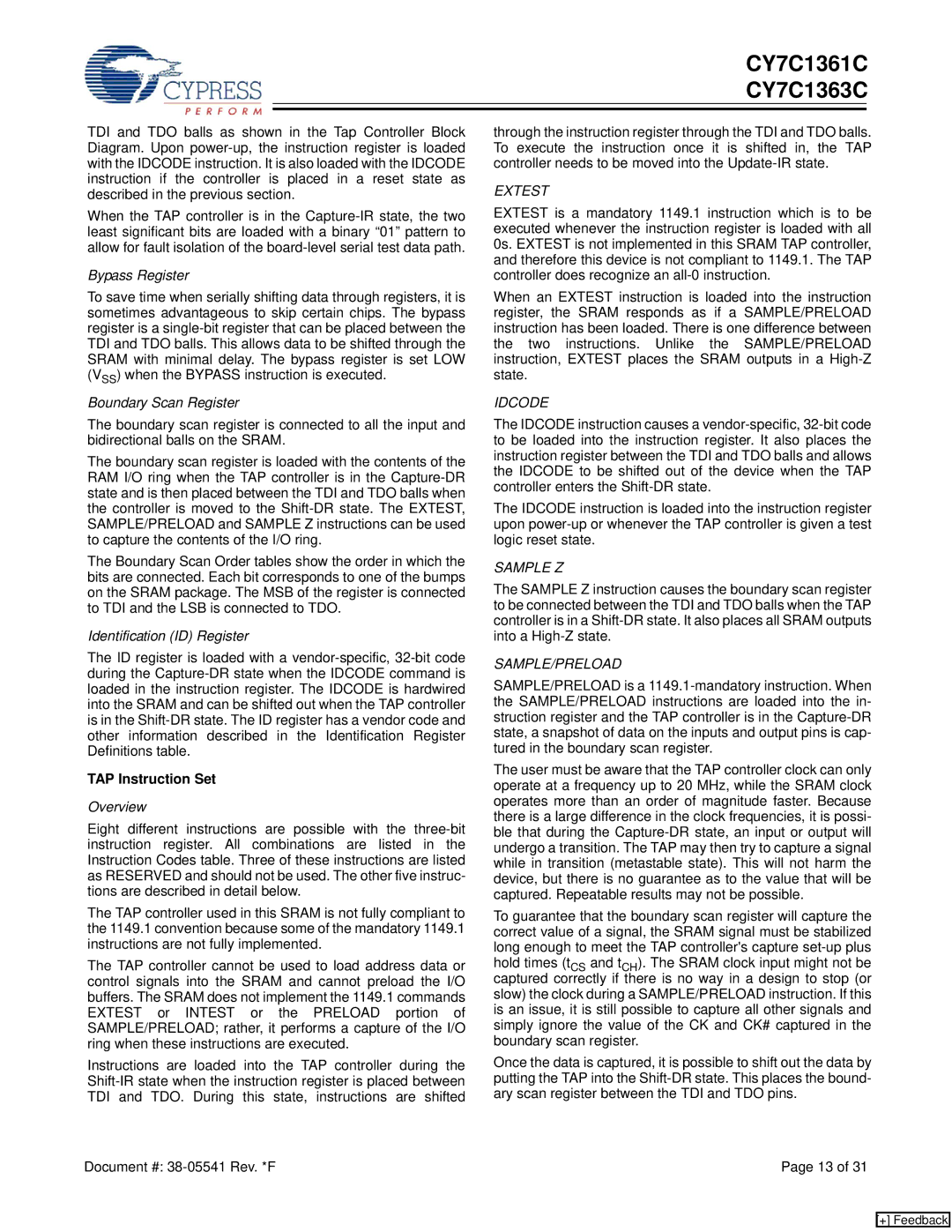
CY7C1361C
CY7C1363C
TDI and TDO balls as shown in the Tap Controller Block Diagram. Upon
When the TAP controller is in the
Bypass Register
To save time when serially shifting data through registers, it is sometimes advantageous to skip certain chips. The bypass register is a
Boundary Scan Register
The boundary scan register is connected to all the input and bidirectional balls on the SRAM.
The boundary scan register is loaded with the contents of the RAM I/O ring when the TAP controller is in the
The Boundary Scan Order tables show the order in which the bits are connected. Each bit corresponds to one of the bumps on the SRAM package. The MSB of the register is connected to TDI and the LSB is connected to TDO.
Identification (ID) Register
The ID register is loaded with a
TAP Instruction Set
Overview
Eight different instructions are possible with the
The TAP controller used in this SRAM is not fully compliant to the 1149.1 convention because some of the mandatory 1149.1 instructions are not fully implemented.
The TAP controller cannot be used to load address data or control signals into the SRAM and cannot preload the I/O buffers. The SRAM does not implement the 1149.1 commands EXTEST or INTEST or the PRELOAD portion of SAMPLE/PRELOAD; rather, it performs a capture of the I/O ring when these instructions are executed.
Instructions are loaded into the TAP controller during the
through the instruction register through the TDI and TDO balls. To execute the instruction once it is shifted in, the TAP controller needs to be moved into the
EXTEST
EXTEST is a mandatory 1149.1 instruction which is to be executed whenever the instruction register is loaded with all 0s. EXTEST is not implemented in this SRAM TAP controller, and therefore this device is not compliant to 1149.1. The TAP controller does recognize an
When an EXTEST instruction is loaded into the instruction register, the SRAM responds as if a SAMPLE/PRELOAD instruction has been loaded. There is one difference between the two instructions. Unlike the SAMPLE/PRELOAD instruction, EXTEST places the SRAM outputs in a
IDCODE
The IDCODE instruction causes a
The IDCODE instruction is loaded into the instruction register upon
SAMPLE Z
The SAMPLE Z instruction causes the boundary scan register to be connected between the TDI and TDO balls when the TAP controller is in a
SAMPLE/PRELOAD
SAMPLE/PRELOAD is a
The user must be aware that the TAP controller clock can only operate at a frequency up to 20 MHz, while the SRAM clock operates more than an order of magnitude faster. Because there is a large difference in the clock frequencies, it is possi- ble that during the
To guarantee that the boundary scan register will capture the correct value of a signal, the SRAM signal must be stabilized long enough to meet the TAP controller's capture
Once the data is captured, it is possible to shift out the data by putting the TAP into the
Document #: | Page 13 of 31 |
[+] Feedback
